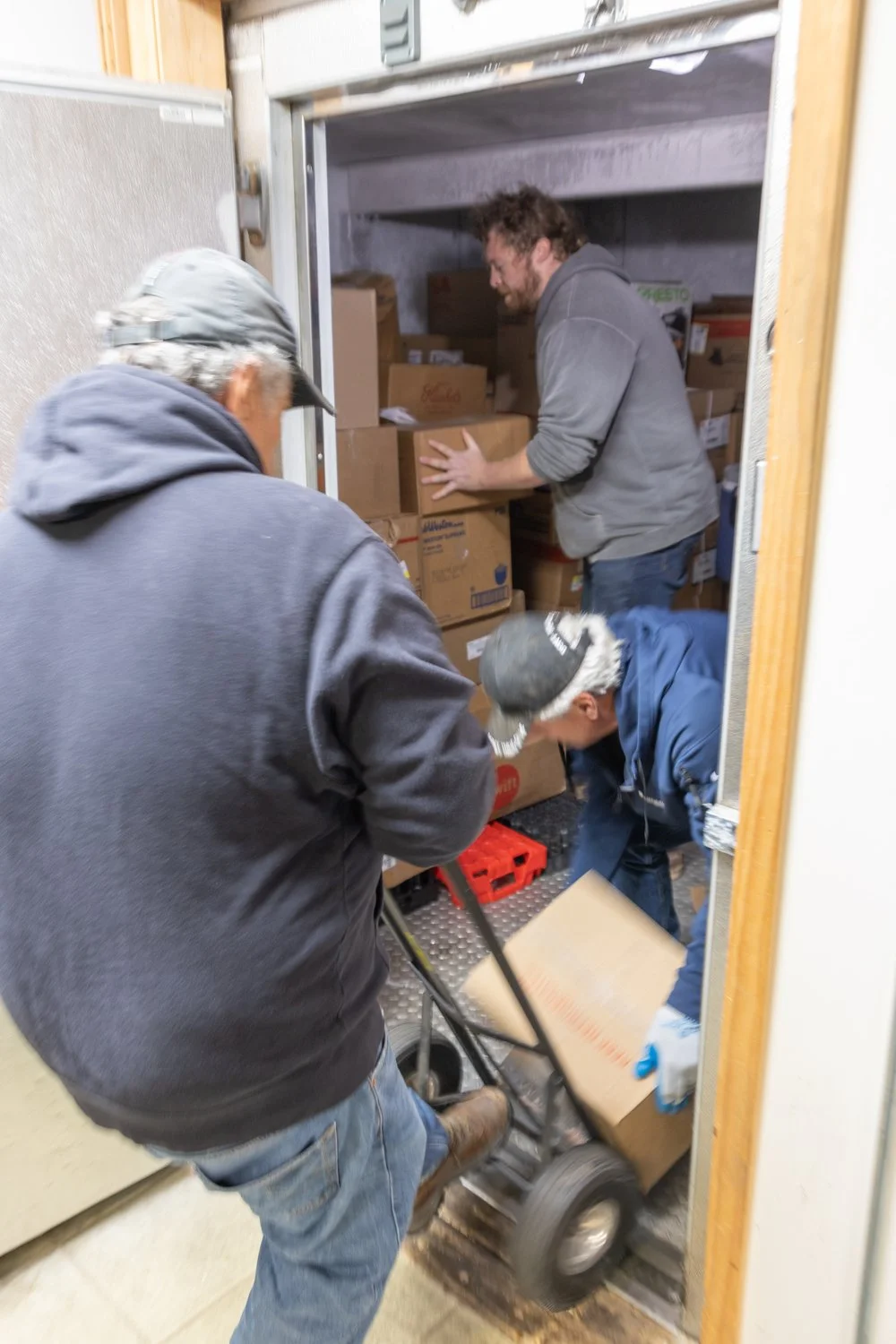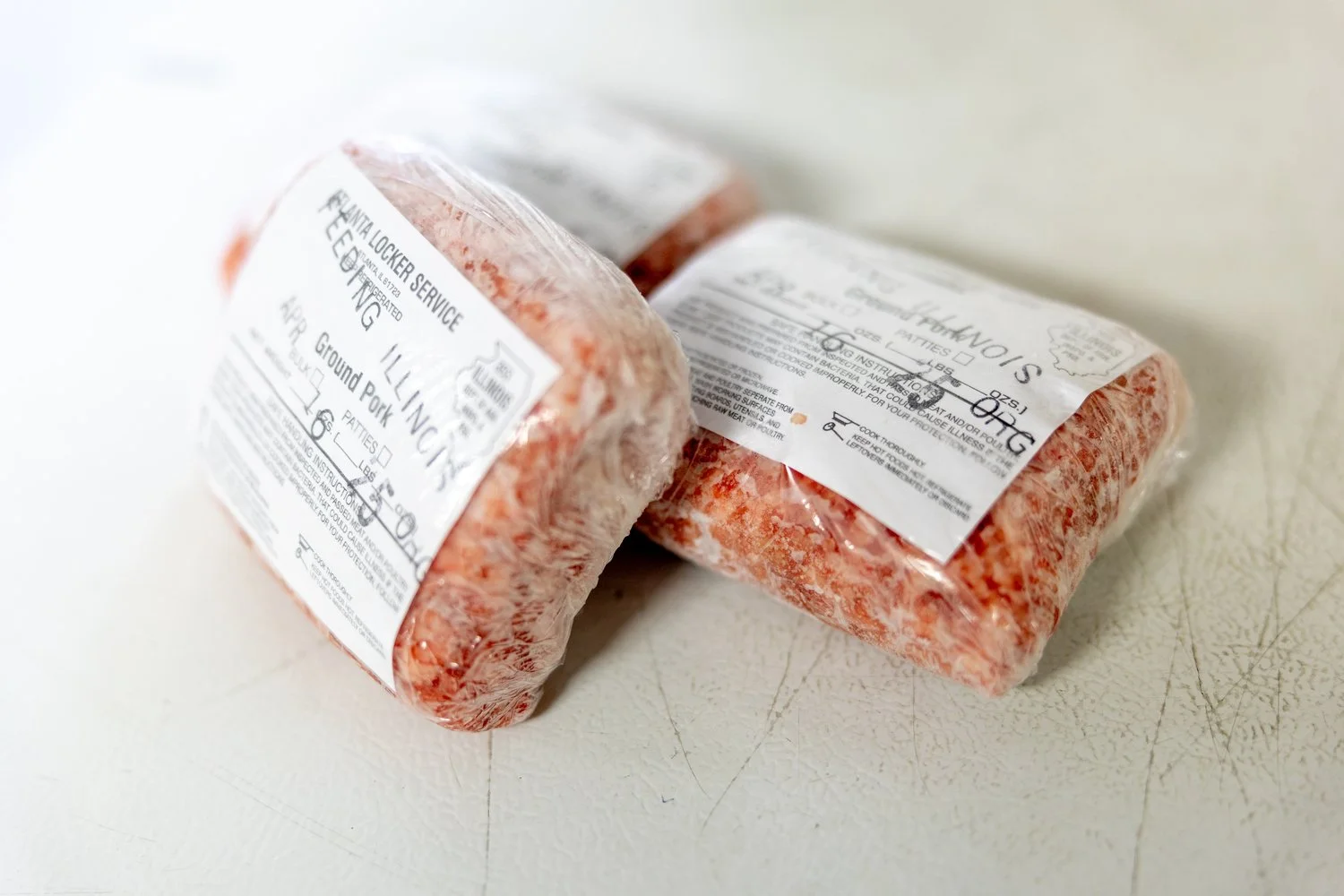What Is Farmers Feeding Illinois?
Farmers, Hunters, and Neighbors Unite to End Hunger in Illinois
In Illinois, where agriculture is central to the state’s identity, hunger remains a persistent challenge. One in 10 people experience food insecurity every day, including one in eight children. Farmers Feeding Illinois, the state association of Feeding America, is working to change that with three core initiatives: Farm to Food Bank Program, Grain for Good, and Hunters Feeding Illinois.
In the United States, 30 to 40% of all food goes uneaten. Steve Ericson, a 24-year veteran in hunger relief and executive director of Feeding Illinois, wanted to find a way to eliminate food waste, while also working to meet record demand for food banks. By connecting farms, hunters, and processors with food banks and pantries across the state, Feeding Illinois is helping get high-quality, nutritious food to Illinoisans who need it most. "We're not here to perpetuate food insecurity. We're here to solve the issue of hunger," Ericson said. He noted the scale of the challenge: "In Illinois alone, we have roughly 1.5 million people, food insecure neighbors, and that's 12% of our population."
Farm to Food Bank Program
A pilot for the Farm to Food Bank Program first launched in 2021 with support from the Illinois Farm Bureau and other partners. In its initial phase, the pilot focused on researching how to build an effective statewide system that could bring surplus and off-grade produce from farms to the eight Feeding Illinois food banks serving all 102 Illinois counties. Zach Samaras from the Illinois Sustainable Technology Center described this work as “a large logistical puzzle.”
After pilot projects in 2022 demonstrated the potential impact, the program scaled up in 2023. That year alone, it acquired nearly one million pounds* of fresh produce grown in Illinois and distributed it to pantries and community agencies. The range was broad, covering over 40 types of produce, from apples to zucchini. More than 70 farmers were paid a fair rate to cover their picking and pack-out costs, returning nearly $440,000 into local farm businesses. “From day one, we wanted to make this easy for farmers,” said Ericson. “Without the farmers, there is no program."
One example of how this program helps avoid food waste can be seen in the partnership with The Valley Orchard, a family-owned operation in Cherry Valley. As the end of their apple season approached and a cold snap threatened to destroy the remaining harvest, the orchard had roughly 200 bushels still on the trees. Rather than let the fruit go unpicked, they partnered with the Farm to Food Bank Program and Northern Illinois Food Bank to harvest, pack, and deliver more than 9,700 pounds of fresh apples to families across the region.
In 2023, the Farm to Food Bank initiative also worked with Victory Acres - Peoria Rescue Ministries to coordinate the distribution of over 2,000 raised garden beds to agencies and organizations across the state. These gardens expanded access to fresh produce and created educational opportunities around growing food locally.
The effort has gained strong support at the state level. In August 2023, Governor JB Pritzker signed the Illinois Farm to Food Bank Act into law, establishing permanent funding of $2.5 million in 2024 to sustain and grow the program. The majority of this funding will purchase food directly from Illinois farmers, while the rest will support storage, transportation, and other infrastructure improvements so that perishable items can reach underserved communities.
*Many of the statistics from this section are from the Illinois Farm to Food Bank Program 2023 Year in Review.
Grain for Good
The second initiative under Farmers Feeding Illinois is Grain for Good. This pilot program launched in 2024 to engage grain farmers and livestock producers in combating hunger. It builds on the Bushels for Hunger model, which previously operated in three counties, and expands it to Woodford, Logan, LaSalle, Marshall, and Tazewell counties. The process is straightforward: Participating farmers donate a portion of their corn, soybeans, wheat, or other grains to the program. The proceeds are then used to purchase pork from Illinois hog farmers, which is processed and distributed through the Feeding Illinois food banks to local pantries.
In the early months of the Grain for Good pilot, donations helped deliver 3,000 pounds of ground pork to the Open Arms Food Pantry in Metamora. For communities like Woodford County, where nearly 10% of residents face food insecurity, this protein is an essential addition to pantry shelves. Nathan and Ali Gibbs, two of the first farmers to contribute, explained that donating even a single bushel per acre can have a significant impact. “We have the capacity here to help out, and I can’t fathom just sitting here looking at this ground and not utilizing it to help our neighbors in need,” Ali shared. Their participation provided funds for the pork donation while also demonstrating how grain farmers who may not have surplus produce can still be part of hunger relief in a way that fits their operations.
Ericson noted that this model keeps donations hyperlocal. When a farmer donates to Grain for Good, the resulting food stays in their community. The program aims to raise $50,000 in contributions to help feed over 26,500 food-insecure neighbors in the initial counties. Long term, Feeding Illinois plans to expand Grain for Good statewide.
Hunters Feeding Illinois
The third key program under the Farmers Feeding Illinois umbrella is Hunters Feeding Illinois. This effort began as the Illinois Deer Donation Program and was rebranded in 2024 to reflect expanded partnerships and broader reach. Hunters Feeding Illinois makes it easy for hunters to donate whole harvested deer to provide lean protein to families facing food insecurity. Working with a network of meat processors, the program processes donated deer into ground venison, which is then distributed frozen to food pantries. During the 2023 season alone, over 300 deer were processed, producing more than 12,000 pounds of venison for Illinois families.
The reach of Hunters Feeding Illinois has grown to cover 32 counties across east-central and southern Illinois. Ericson emphasizes that this expansion would not be possible without hunters, processors, and food banks all working together. He said, “Hunters are passionate about their sport and communities. It’s inspiring to see the generosity of hunters who donate deer, knowing that venison provides essential protein to our Illinois neighbors in need.”
The process for hunters is designed to be as simple as possible. They can drop off whole deer at no cost at any participating processor. Because processing capacity fills up as hunting season progresses, hunters are encouraged to call ahead and confirm space. To help cover costs, donations to the program are matched dollar for dollar. A $50 contribution becomes $100, enough to cover processing for one deer.
Together, these three programs show the potential of collaboration rooted in practical action, something that is sorely needed across Illinois. "There is no county or community in Illinois—or the country for that matter—that doesn't have food insecure neighbors," said Ericson. Instead of letting produce go unharvested, or surplus grain be sold only as commodity exports, or game meat remain unused, Farmers Feeding Illinois offers ways for Illinoisans to feed hungry people in their own counties. The work also builds stronger local economies, supports family farms and small businesses, and increases the availability of fresh, nutrient-dense foods in rural and urban communities alike.
Looking ahead, Feeding Illinois plans to deepen partnerships with farmers, agricultural organizations, and community groups to expand each of these initiatives. Efforts will include growing the base of participating farmers, recruiting more grain donors, supporting socially disadvantaged producers, and strengthening distribution infrastructure. "It's a collaborative effort with all sorts of different stakeholders," said Ericson, "but, really, it's about engaging youths early on."
Illinois farmers, hunters, and rural businesses already work hard every day to feed the state. Farmers Feeding Illinois is a way to channel that commitment into sustainable solutions for hunger. With continued public and private support, this approach can serve as a model for other states seeking to link local agriculture with food security in a concrete, measurable way.
Get Involved
For more information about Farmers Feeding Illinois and its programs, visit FeedingIllinois.org. If you are a farmer, hunter, or community member interested in participating, you can learn about donation options, find resources, or make a contribution to help cover processing costs.






